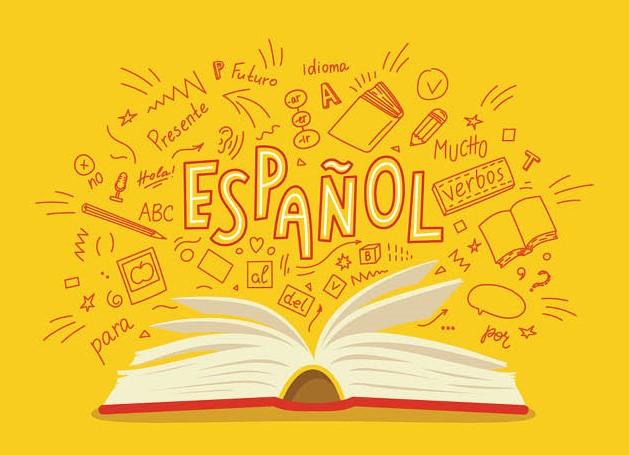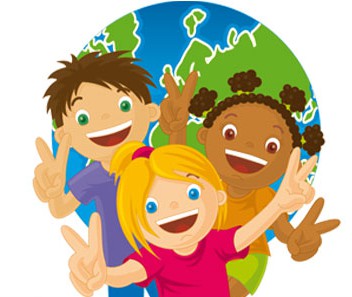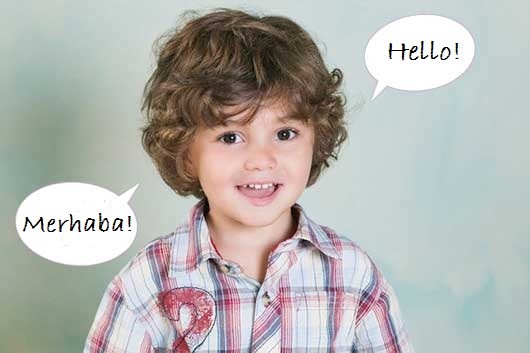Bilingualism is competence in more than one language can be thought at either an individual or social level. If you are proactive from the start, you will stand a much better chance of nurturing a good balance in the child’s bilingual ability.
From birth to age 6 or 7 is a critical time because this is the period young brains are most prımed for language. I was always interested in other languages, cultures and customs and always thought of bilingualism as a magic power. It’s clear to most of us that speaking multiple languaes is a good thing, and learning multiple languages in the early years is a nearly effortless means to fluency. The effect of growing up bilingually includes superior reading and writing skills in both languages, as well as better analytical, social and academic practice. Children on the other hand, seem to pick up their native language out of thin air. A word’s meaning sounds and grammatical function all must be extracted from the incoming speech stream.
Yet this potentially arduous task is typically executed with little effort by children barely a year old. In fact, studies show that children can learn a word in as little as one exposure. Although the miroculous progress from cooing to speech occurs in exactly the same fashion whether it transpires in one or in several languages, the practicalities are different. Family agreement is very important that couples find one solution that is acceptable to both parents as well as benefical to the child. It’s possible to succesfully introduce as many as four languages provided you can offer enough exposure and need for each one.
You can find others who are raising their children to speak your language. These future play dates will provide your child with the ultimate language teachers. Raising multicultural children requires also patience, and there are going to be times when doubt sneaks in.
It is important to be both very serious and very playful at the same time; serious about the process and yet playful when it comes to carrying that process out.
Bahriye GAIR
Anasınıf Öğretmeni
KALEV Eğitim Kurumları



 Her yıl binlerce resimli çocuk kitabı basılıyor ve baktığınızda kitapçılardaki çocuk bölümleri, en iyi ressamlar tarafından hazırlanan eski ya da yeni sevilen kitapların muhteşem seçeneklerini sunuyor. Ana dili İngilizce olup da bu kitapların tadını çıkaran çocukların yararlandığı bu olanaktan İngilizceyi ek bir dil olarak öğrenen küçük çocukların da yararlanmaması için hiçbir neden yoktur. Fakat yabancı kaynaklar ana dili İngilizce olan çocuklara yönelik hazırlandıkları için kitap seçiminde biraz dikkatli davranmak gerekiyor. Yani çocuğunuzun yaşına uygun gibi görünen bir kitap İngilizce seviyesi olarak yüksek olabiliyor. Bu yüzden çocuğunuzun yaşına göre değil de kitabın içeriğine göre seçim yapmanız faydalı olacaktır. Kitabın mutlaka içine bir göz atın, kelime ve cümle seçimlerine bakın; okuduğunuzda anlayabilecek mi onu tartın. Bazen kitaptaki cümleler, kelimeler direkt okuduğunuzda anlaşılması zor olabilir, ama bu kez siz okuduktan sonra sadeleştirerek tekrar anlatım yapabilirsiniz. Ya da okumayıp, resimler üzerinden anlatım yapabilir, görseller üstünden konuşabilirsiniz. Ama İngilizceden Türkçeye çeviri yapmadığınızdan emin olun. Çeviri yapmak, çocuğu Türkçe düşünmeye yönlendirecektir.
Her yıl binlerce resimli çocuk kitabı basılıyor ve baktığınızda kitapçılardaki çocuk bölümleri, en iyi ressamlar tarafından hazırlanan eski ya da yeni sevilen kitapların muhteşem seçeneklerini sunuyor. Ana dili İngilizce olup da bu kitapların tadını çıkaran çocukların yararlandığı bu olanaktan İngilizceyi ek bir dil olarak öğrenen küçük çocukların da yararlanmaması için hiçbir neden yoktur. Fakat yabancı kaynaklar ana dili İngilizce olan çocuklara yönelik hazırlandıkları için kitap seçiminde biraz dikkatli davranmak gerekiyor. Yani çocuğunuzun yaşına uygun gibi görünen bir kitap İngilizce seviyesi olarak yüksek olabiliyor. Bu yüzden çocuğunuzun yaşına göre değil de kitabın içeriğine göre seçim yapmanız faydalı olacaktır. Kitabın mutlaka içine bir göz atın, kelime ve cümle seçimlerine bakın; okuduğunuzda anlayabilecek mi onu tartın. Bazen kitaptaki cümleler, kelimeler direkt okuduğunuzda anlaşılması zor olabilir, ama bu kez siz okuduktan sonra sadeleştirerek tekrar anlatım yapabilirsiniz. Ya da okumayıp, resimler üzerinden anlatım yapabilir, görseller üstünden konuşabilirsiniz. Ama İngilizceden Türkçeye çeviri yapmadığınızdan emin olun. Çeviri yapmak, çocuğu Türkçe düşünmeye yönlendirecektir.  A recent article in the New York Times reported that bilingual children even have superior social skills when compared to their single-language learning peers. By learning two languages, we are providing the brain with opportunities to build executive functioning and working memory skills, which are the foundational skills underlying organization, focus, and reading abilities. These are the skills that help a child succeed in reading, writing and problem solving tasks.
A recent article in the New York Times reported that bilingual children even have superior social skills when compared to their single-language learning peers. By learning two languages, we are providing the brain with opportunities to build executive functioning and working memory skills, which are the foundational skills underlying organization, focus, and reading abilities. These are the skills that help a child succeed in reading, writing and problem solving tasks. Küçük yaşta dil eğitimi söz konusu olunca ebeveynlerden genellikle ikinci bir dili öğretmenin en uygun yaşı nedir sorusu gelir ki, biz eğitimciler bunun anne karnında bile başlayabileceğini söyler ve ne kadar erken o kadar iyi olduğunun altını çizeriz. Bunun üzerine hemen şu sorular gelir: Peki biz şu dili öğretirken onun anadilde geri kalmasına sebep olmaz mıyız? Kafası karışmaz mı? Peki ya herkesten geç konuşursa?
Küçük yaşta dil eğitimi söz konusu olunca ebeveynlerden genellikle ikinci bir dili öğretmenin en uygun yaşı nedir sorusu gelir ki, biz eğitimciler bunun anne karnında bile başlayabileceğini söyler ve ne kadar erken o kadar iyi olduğunun altını çizeriz. Bunun üzerine hemen şu sorular gelir: Peki biz şu dili öğretirken onun anadilde geri kalmasına sebep olmaz mıyız? Kafası karışmaz mı? Peki ya herkesten geç konuşursa?
 accompany a picture in a playful way. For example, “A is for apple” (Dryden & Rose, 1995; Dryden & Vos, 1997).
accompany a picture in a playful way. For example, “A is for apple” (Dryden & Rose, 1995; Dryden & Vos, 1997). Learn with lots of movement—use the body and the mind together. The brain and the body are one. However, the traditional education system encourages students to sit all day long. Now we know that we learn more when we move as we learn. Encourage children to dance and move to the rhythm when learning a second or third language (Gardner, 1983; Doman, 1984; Dryden & Vos, 1997).
Learn with lots of movement—use the body and the mind together. The brain and the body are one. However, the traditional education system encourages students to sit all day long. Now we know that we learn more when we move as we learn. Encourage children to dance and move to the rhythm when learning a second or third language (Gardner, 1983; Doman, 1984; Dryden & Vos, 1997). “Preschool is an exciting time to watch a child explore and learn about their world. Learning English in preschool enables toddlers to have the tools to communicate with the world around them. At this age, kids can ask for specific items, ask questions, talk about their world and communicate on a much higher level than they did before entering preschool. “
“Preschool is an exciting time to watch a child explore and learn about their world. Learning English in preschool enables toddlers to have the tools to communicate with the world around them. At this age, kids can ask for specific items, ask questions, talk about their world and communicate on a much higher level than they did before entering preschool. “